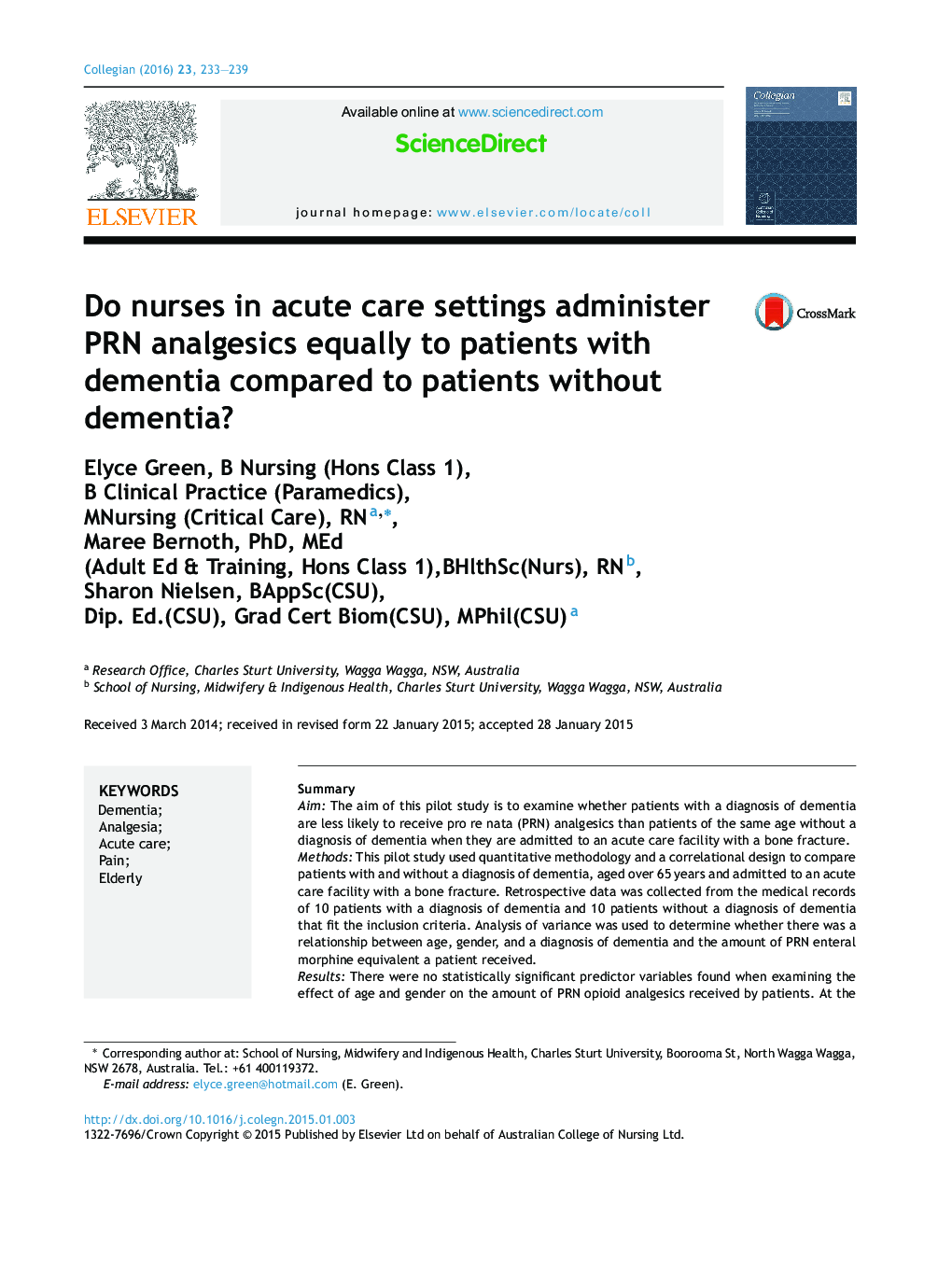| Article ID | Journal | Published Year | Pages | File Type |
|---|---|---|---|---|
| 2646078 | Collegian | 2016 | 7 Pages |
SummaryAimThe aim of this pilot study is to examine whether patients with a diagnosis of dementia are less likely to receive pro re nata (PRN) analgesics than patients of the same age without a diagnosis of dementia when they are admitted to an acute care facility with a bone fracture.MethodsThis pilot study used quantitative methodology and a correlational design to compare patients with and without a diagnosis of dementia, aged over 65 years and admitted to an acute care facility with a bone fracture. Retrospective data was collected from the medical records of 10 patients with a diagnosis of dementia and 10 patients without a diagnosis of dementia that fit the inclusion criteria. Analysis of variance was used to determine whether there was a relationship between age, gender, and a diagnosis of dementia and the amount of PRN enteral morphine equivalent a patient received.ResultsThere were no statistically significant predictor variables found when examining the effect of age and gender on the amount of PRN opioid analgesics received by patients. At the 10% significance level, patients without a diagnosis of dementia received significantly more PRN analgesics than patients with a diagnosis of dementia in the first 3 days of admission. There was no significant relationship between opioid analgesia and a diagnosis of dementia after the 24 h and 7 day periods.ConclusionThe results from this pilot study indicate that patients without a diagnosis of dementia may be receiving more PRN opioid analgesics than patients with a diagnosis of dementia in acute care when admitted with a bone fracture. Further research is required to provide evidence on which generalisations can be made and to improve quality of life for people with dementia admitted to an acute care hospital.
